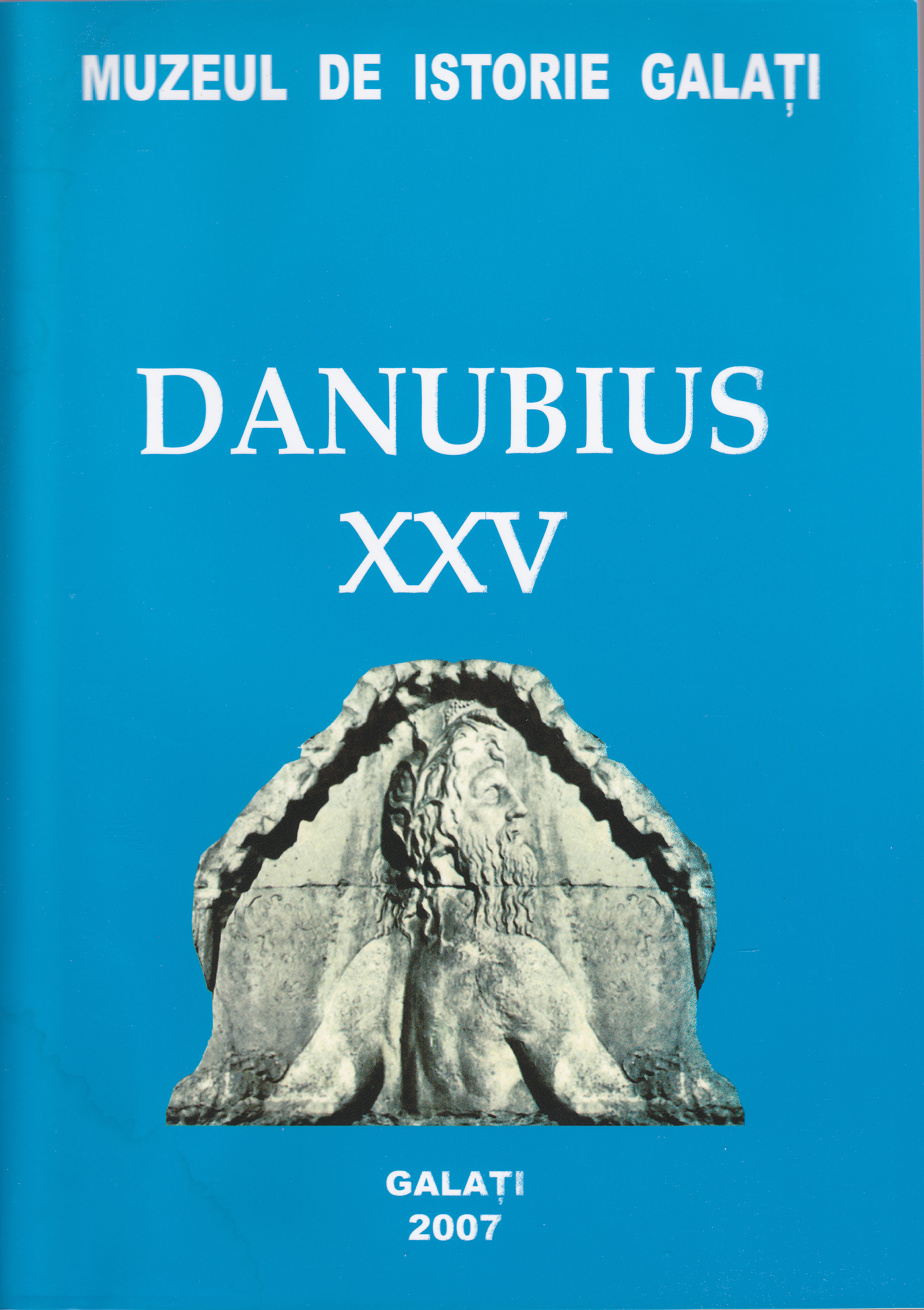Consideraţii privind motivul decorativ ceramic din zona carpato-danubiano-pontică (sec. VIII-XI) (II)
Viewpoint concerning the ceramic decorative motifs from the Carpathian-Danubian-Pontic area (VIIIth – XIth centuries) (II)
Author(s): Cristina Paraschiv-TalmaţchiSubject(s): History, Archaeology, Middle Ages, 6th to 12th Centuries
Published by: Muzeul de Istorie „Paul Păltănea” Galaţi
Keywords: Danube area;Black Sea area; pottery; Middle Age;
Summary/Abstract: After having analyzed the problems raised by the decorative motifs on the ceramics from the VIIIth – XIth centuries, we have suggested, in the first part of our material , several phases of evolution of the ornamental motifs of the period in question:I – comprises the VIIIth century and the first half of the IXth century (plate I);II – the second half of the IXth century – the beginning of the XIth century (plate II);III – the XIth century (it surpasses the period analyzed by us) (plate III).Stormed by several migratory waves, during the VIIIth century AD, the autochthonous society experienced a decrease in the technique of pottery production and, implicitly, of ornamentation. The craftsmen limited themselves to the procedures of grooving and incision. Along with incised decoration, we find those executed in the technique of glazing, characteristic to the black-grey pottery and rarely applied on the pots baked in an oxidizing manner. The range of motifs used by this procedure is rather scarce, consisting of networks of glazed lines and of vertical glazing.During the second stage, the decoration of the locally produced pottery becomes richer and more varied, acquiring, at the same time, a better arrangement on registers, as well as a superior aesthetic level. This development and embellishing is due to the fairly stable political situation which gave the potter the possibility to take better care of the product of his work, to the evolution of social-political organization, which had its role in the development and specialization of crafts, as well as to the return of the Byzantine border at the Danube and, implicitly, to the direct influence from the empire. During this period, he craftsman uses a paste of better quality, well-kneaded, with fewer impurities, thus determining a change in the aspect of the background on which the decoration was applied, as the absence or scarcity of coarse-grained materials leaves the movement of the tool free and undisrupted. The end of the IXth century AD and the first half of the following one represent, as a matter of fact, the apex of ornamental aesthetics, which reveals a greater care in execution, but also a well-marked creative level. From the very start of this stage, during the second half of the IXth century AD, we notice the expansion of the ornamental field up to a segment near the lower limit of the vessels.The first part of the XIth century AD opens the third stage in which the disruptions of everyday life, due to the presence of nomadic peoples, will be felt on ornamentation too, by the tendency to simplify and barbarize the elements which decorated the pottery.The second half of the XIth century AD brings some essential changes: increases the percentage of vessels decorated with horizontal lines in the shape of the musical stave; the motif made with the sprocket wheel becomes predominant in North-Western Dobrudja; the wave lines have a sloppy aspect and are erratically traced; the ornamental field of the vessels is reduced both in terms of size and in terms of number of decorative elements (we can find only one wave line placed on the shoulder or the middle of the body); whitish loam pottery disappears. We also notice that, whereas until the middle of the XIth century AD the ornaments had been made, predominantly, with a comb having many sharp teeth, from the second half of this century, and especially from the beginning of the XIIth century AD, instruments having two or three round-tipped teeth started to be used. This brought another element to the old motifs, as the horizontal lines became deep, distanced and negligently drawn. Thus, the end of the XIth century AD marks the decline of the technical and aesthetical level of pottery decoration, in comparison to the first two stages of the period. We also mention that the cultural found of the VIIIth – XIth centuries presents many regional aspects, announced since the previous period and determined by the specific historical conditions.The distinctive elements of the decorative range specific to the pottery of the VIIIth – XIth centuries, from the territory situated between the Carpathians, the Danube and the Black Sea, can be identified, during the same period, on the pottery from Northern Bulgaria, from Serbia, Bohemia and Great Moravia, as well as, towards the East, from the Republic of Moldova, Ukraine and the area of the Azov Sea. Although these elements are identical in terms of typology and depiction technique, only those from Northern Bulgaria and the Republic of Moldavia have a general aspect that comes closer to the one from the territory we have considered. For all the other cases, with a few exceptions, we notice that, although the decoration was executed by procedures which involved an intervention upon on the paste, the depiction style, the manner of setting everything on the ornamental field, of associating the decorative elements and even the different shapes of the vessels on which they appear, offer, on the whole, an image that is different from the one offered by the decorative motifs which cover the ornamental field of the pottery discovered in Dobrudja, Muntenia and Oltenia. Consequently, we are dealing with different cultural areas and, sometimes, with chronological gaps. Responsible for the cultural specificity of the areas we discussed are its Roman foundations and the Roman-Byzantine influences, since the model of the artifacts is given, in general, by the best products that circulate during their age. All these “patterns” can be preserved until the appearance of a better one.
Journal: Danubius
- Issue Year: XXV/2007
- Issue No: 1
- Page Range: 27-44
- Page Count: 18
- Language: Romanian

